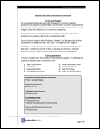Thought Organization People
OurDimension I: Thought Leadership
First and foremost, Leadership is a thinking role. Today's leaders are required to create a vision of the future, incorporating strong personal values to establish clear, desirable objectives. Strategies and priorities must then be produced to achieve the objectives in face of competition. Thought leaders must anticipate, prevent and overcome the problems which invariably stand in the way of accomplishing any ambitious goal. Goal-mindedness demands mental toughness, strong drive and self-discipline to pursue the course relentlessly and triumph over adversity. A thought leader must be a proficient thinker and communicator in order to create, define and implement the five essential components of thought leadership.
Dimension II: Organization Leadership
When envisioning corporate objectives and the strategies to attain them, a leader must determine the various resources and support they will require. The mature leader knows that one cannot accomplish the mission alone. Thus, the leader must design the organization structure to achieve corporate objectives. This will require the assignment of tasks and responsibilities into roles which are essential to the effective implementation of an organization plan. However, because an organization is made up of people, the leader must also clearly define success standards for each job which focus on the human talent (behavior and values) and skills needed to perform them. Bureaucracy and unnecessary roles must be eliminated. Organization leadership requires constant planning and communication between management and employees to keep the performance of jobs focused on and related to achieving corporate objectives. Re-engineering of roles may be necessary as competition advances, the environment becomes more complex and profitability is threatened.
Dimension III: Leadership of People
The most visible dimension of leadership involves the selection, management and development of people. A true leader of people must understand human behavior and possess the motivating power to attract and develop competent "followers". Whether it be a natural sense of command, inspiration, charisma or personal projection, one must accrue devoted people who support the leader's cause enthusiastically. The leader must begin by selecting, placing, and promoting only the most qualified people. Then by addressing each individual's unique "wants" and "needs" the leader will develop and retain committed, self-motivated and productive employees who want to achieve superior results. Attention to the professional development of employees provides depth for succession and organizational growth. By instilling a strong sense of purpose and commitment, the leader must then build a mutually supportive team which will work together to achieve corporate objectives.
Thought Leadership
- Corporate Vision
- Corporate Values
- Corporate Objectives
- Master Strategies
- Discipline for Results
Organization Leadership
- Designing Organization Structure and Process
- Re-engineering Management Roles
- Measuring Jobs Against Objectives
- Creating Standards for Job Success
Leadership of People
- Selecting and Placing Superior Talent
- Applying Personalized Leadership
- Developing People to Achieve Potential
- Building the Leadership Team


